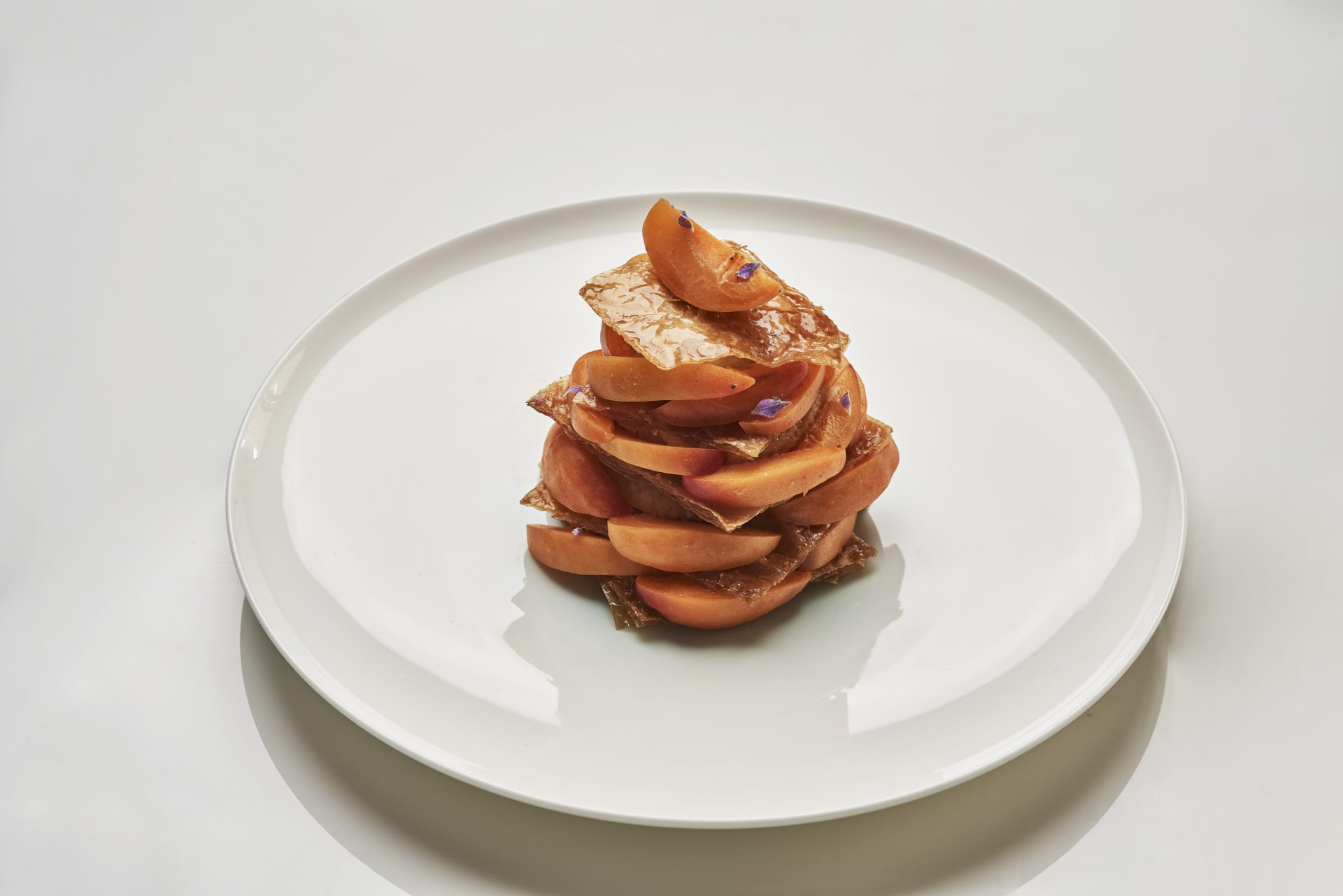The Greeks do wonderful things with dairy.
I have not traversed the country, but I have been to Athens, and remember fondly a bar dedicated entirely to yoghurt. Stani, founded in 1931, is an old-fashioned dairy bar, and home to perhaps the best yoghurt in the world. It is thick and luscious and comes dripping in honey and speckled by cracked walnuts.
Greece is also a place to enjoy filo pastry. Delicate sheets are folded into fine tapestries.
Spanakopita, where crisp edges give way to a soft mattress of spinach and feta is a dish to be prized. Tiropita, which calls for a simple mixture of eggs and kasseri cheese – a harder, nuttier sheep’s milk cheese – is baked without spinach, but brings about the same combination of pillowy centre and golden crust.
Naturally, filo pastry, the dry canvass that it is, is perfect when matched with something creamy, and also lends itself warmly to fruit. Apricot milk pie – a tower of soft slivers of apricot and layers of pastry – does this idea justice. Its filling, made with butter, milk, sugar and vanilla, is silky and sweet, and the final piece of the puzzle.
The pie is the world of Asimakis Chaniotis, executive chef of the Michelin-starred Pied à Terre in London’s Fitzrovia.
It is his refined take on a classic Greek milk pie, created last year at his family home on the island of Kefalonia, where Asimakis has bright apricot trees growing in the garden.
Serves 3-4
Ingredients:
6 filo pastry sheets 7cm by 7 cm
6 filo pastry sheets 6cm by 6 cm
6 filo pastry sheets 5cm by 5 cm
6 filo pastry sheets 4cm by 4 cm
3 tbsp melted butter
3 fresh and ripe apricots – cut in half, stones removed and then cut into wedges about 1cm thick
For the cream filling:
300ml milk
130g sugar
60g fine semolina
2 whole eggs
1 tbsp butter
1/5 vanilla pod (seeded and scraped) or 2 drops of vanilla essence
For the lavender syrup:
50 ml water
50 g sugar
1 teaspoon lemon juice
2 sprigs of lavender
Method:
Preheat your oven to 180°C.
Start with the filo pastry which you have already cut into different sized squares. Butter each piece and stack each same-sized piece together so you have six piles, all different sizes. This will create an impressive tower shape when you serve your dessert.
Place the filo piles onto a baking tray, lined with greaseproof paper, and bake for 15 minutes until golden brown.
Meanwhile make your lavender syrup by adding all of the ingredients into a pan and bringing to a boil, before taking off the heat. Remove the sprigs of lavender.
Over a wire rack, pour the hot syrup over the hot cooked filo pastry and leave to cool until the pastry dries out and is crispy.
Bring the milk to the boil and add the semolina, whisk constantly until it boils and thickens. In a separate bowl, whisk the eggs with the sugar and the vanilla. Take the milk mix off the heat and allow to cool slightly. When still warm, but not scorching, slowly start adding the milk mixtures to your bowl while whisking constantly. Add the butter and mix until it’s all emulsified.
Leave the mixture to cool down but mix it every five minutes so it will not have a crust on top, then cover with clingfilm and place in the fridge for around an hour to set completely.
When set, remove from the fridge and whisk for a minute before transferring to a piping bag.
To serve, place the biggest piece of filo onto a serving dish. Pipe on a circle of cream, leaving space around the edge. Repeat until you’ve finished up all of the filo and you have a tower shape. Place the wedges of apricot into the layers of filo and cream. Serve immediately
Warning: Illegal string offset 'link_id' in /mnt/storage/stage/www/wp-includes/bookmark.php on line 357
Notice: Trying to get property 'link_id' of non-object in /mnt/storage/stage/www/wp-includes/bookmark.php on line 37







